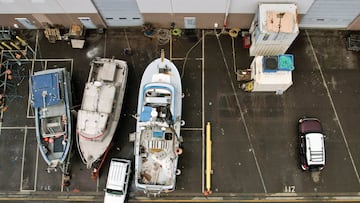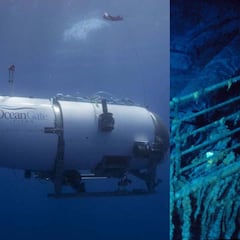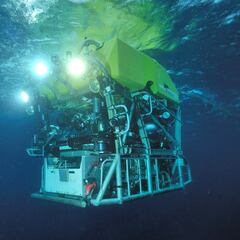Oceanographers’ warnings from five years ago about the Titan submersible
Experts expressed concerns about the lack of safety guarantees for the submersible and sent the company a letter asking them to allow an independent audit.

Time is running out for rescue teams working to find the Titan submersible that lost communication underwater, as it was heading towards the remains of the Titanic at a depth of 12,400 feet. They are still trying to assess the feasibility of a rescue mission, as the five crew members of the ship had a maximum of 96 hours of oxygen, which runs out tomorrow. This means that there are only a few hours left in which there is still a possibility, however remote, of recovering the unfortunate passengers alive. Among them is Stockton Rush, the executive director of the submersible’s maker, OceanGate.
It seems highly unlikely that the lives of the five on board can be saved at this point. Among other things, because a recovery operation at these depths - even if the exact location of the vehicle was known - can last for days. And, as already noted, there is not much air supply left in the small cabin. Therefore, barring a miracle, it seems that the maneuvers of the authorities will serve, at most, to recover the remains.
Much has been said in recent days about the causes that could be behind this tragic event. Although some would say that bad luck played a role in the outcome of the Titan expedition, there are also many who point out that this scenario could have been avoided if the company had listened to the experts.
Marine experts warned OceanGate of possible catastrophe
As early as 2018, when more and more details of the project became known, several prominent people in the field of ocean exploration sent a letter to OceanGate obtained by The New York Times, expressing concern about the lack of guarantees regarding the safety of the little ship.
"the current 'experimental' approach... could result in negative outcomes (from minor to catastrophic) that would have serious consequences for everyone in the industry"
— John Scott-Railton (@jsrailton) June 20, 2023
Unanimous letter of concern from @MTSociety to the #OceanGate CEO.
Via @nytimes https://t.co/PuzfsKG3p7 pic.twitter.com/Ff62xWRsHM
Calls for an audit ignored
There were repeated calls for those responsible to accept an independent audit that would thoroughly evaluate the submarine, to determine whether or not it was suitable for navigating at abysmal depths. However, OceanGate flatly refused, alleging that these external scrutiny processes are too long and would delay the deadlines for the exploration and study of the remains of the Titanic. The company came to assure that its vehicle had safety guarantees that exceeded the analysis capacity of the competent bodies, by incorporating unprecedented and barely known technologies.
Related stories
A company employee, David Lochridge, raised similar concerns about the safety of the Titan around the same time as the group of oceanographers sent their letter. The company’s response was to fire him outright for, according to them, having breached his contract by revealing confidential details of a project under development.
3) “That employee complained specifically that the sub was not capable of descending to such extreme depths before he was fired.
— Eric Feigl-Ding (@DrEricDing) June 20, 2023
That’s according to legal documents obtained by The New Republic. According to the court documents, in a 2018 case, OceanGate employee David Lochridge,…
These warnings from years ago seem to indicate that there were many signals that were simply ignored or even silenced by those responsible for the exploration, as OceanGate hurried to move forward with its plans to offer exorbitant adventure tours to the very rich.

